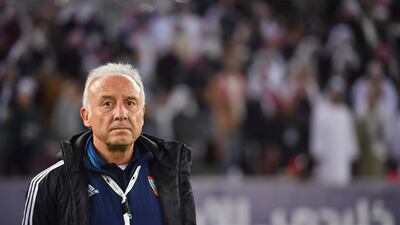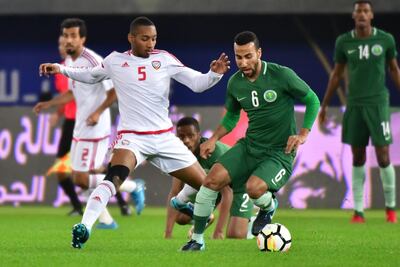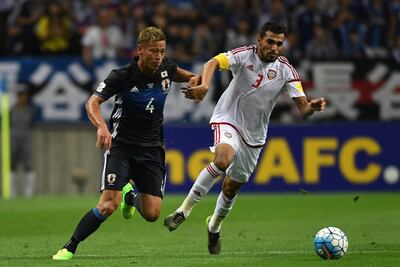Marrying resolve with a ruthless streak
The UAE came within a penalty shootout of winning the trophy. That close, despite not scoring a single goal from open play. In five matches, they registered once, through Ali Mabkhout's spot-kick in the Group A opener against Oman. The four fixtures that followed each finished goalless.
Subsequently, the UAE boasted the competition’s stingiest defence. They did not concede in 510 minutes of football. Appointed in mid-October, Italian Zaccheroni has quickly shaped a side in the mould of many in his homeland. To his credit, the UAE are solid.
Yet, and the criticism has come already, to what expense?
The UAE were blunted, although Zaccheroni can point to mitigating factors. His four main attackers – Omar Abdulrahman, Ali Mabkhout, Ahmed Khalil and Ismail Al Hammadi – have had recent fitness issues. There are a number of other injuries to potentially key players, too.
Zaccheroni needs time. Yet, having buttressed the back line, he must now sharpen the team’s cutting edge.
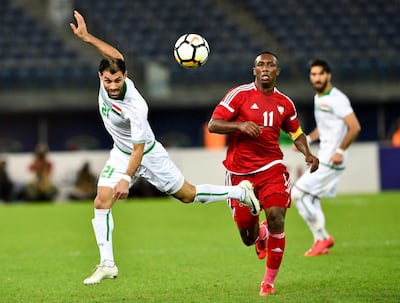
Keeping Ahmed Khalil fit
It is a conundrum that stretches long before Zaccheroni took charge.
Ahmed Khalil has for some time been hugely inconsistent for the UAE, flitting between match-winner and maddening. The problems seem rooted in his chequered injury record: in the past two Arabian Gulf League seasons, he has started 17 matches.
Before his first appearance in Kuwait – as a late substitute in the second group game – Khalil had not featured competitively since playing for Al Jazira in September. Confusion surrounding his future does not help, although upon his return to the UAE Khalil reported to be joining Al Ain.. In Kuwait, he looked a player some way short of his rhythm.
There is no doubt: if Khalil is fit and firing, the UAE have a striker of considerable worth. He has scored vital goals for the national team, through various age groups, for the Olympics team and the senior side.
Keeping him healthy is a must.
Getting midfield fulcrum back
Despite the final defeat, there were many positives for the UAE.
Ali Salmeen was one, the Al Wasl midfielder growing as the tournament progressed. Positioned in central midfield, he snapped into challenges, broke up play, and helped protected the defence.
He was a major reason why the UAE did not concede in five matches. A recent addition to the squad, he performed well alongside regular Khamis Esmail.
However, still the UAE missed Amer Abdulrahman and Majed Hassan. Both players have spent the past year battling injuries, with Abdulrahman returning to the Al Ain side earlier this season and starting to find form. Then he broke down again.
Hassan, meanwhile, is finding his feet following another knee surgery, but the hope is he is almost fully recovered. Those two, particularly Abdulrahman, provide the UAE with something they do not have currently, and something they undeniably need: a deep-lying playmaker.
Abdulrahman and Hassan are hugely talented. Their return would be very welcome.
______________
Read more
John McAuley: After Gulf Cup final heartache, UAE 'have to now work hard for the Asian Cup'
Alberto Zaccheroni: Gulf Cup final 'step in the right direction' for UAE ahead of 2019 Asian Cup
Reactions: Sheikh Mohammed bin Zayed congratulates Oman on Gulf Cup victory over UAE
From the final: Stadium barrier collapse injures 40 at Gulf Cup final between Oman and UAE
____________
Finding options at left-back
In Kuwait, the UAE’s problems at left full-back were clear. Mohammed Barghash played there for the majority, with Zaccheroni trying Mohammed Ahmed for a half against Iraq before he reverted to right-back.
While Barghash coped as well as could be expected, he struggled to add the attacking thrust needed when employing his manager’s preferred formation. Ostensibly a 3-4-3, with two holding midfielders, the system places much responsibility on its wing-backs getting forward.
Clearly right-footed, Barghash found himself often in decent positions to cross, but usually checked back on to his favoured side. Thus, momentum was lost. In contrast, the UAE have little concern at right-back, with Ahmed and Mohammed Fawzi more than competent candidates.
On the opposite flank, though, the options are not as obvious. Mahmoud Khamis seemed a lock, but he is unavailable and should be for a while. Walid Abbas is experienced, but his form has dropped.
It represents a difficult problem to solve.
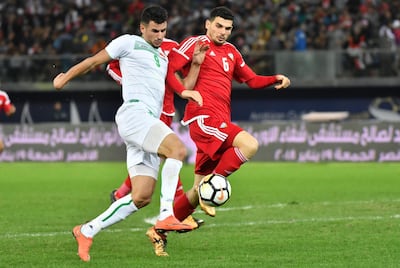
Using Gulf Cup heartache to thrive
The UAE players filed out of the Jaber Al Ahmad International Stadium one by one. Some had their hoods pulled up, faces hidden. Others acknowledged the media present, but motioned their apologies, for they did not want to speak.
Only Mohanad Salem stopped to offer his thoughts on what had just transpired. Defeat in a final is always tough to swallow, let alone explain, but to lose in that fashion?
Their anguish was understandable. It was plain to see.
As Salem suggested, the UAE must move on quickly from this. With the 2019 Asian Cup the primary objective, they have little time to wallow. As hosts in 12 months' time, the UAE have earmarked a place in the final, at least, however far away that feels at the moment.
They will contest the King’s Cup in Thailand in March and continue preparations through the summer. The defeat to Oman needs to serve as motivation.
